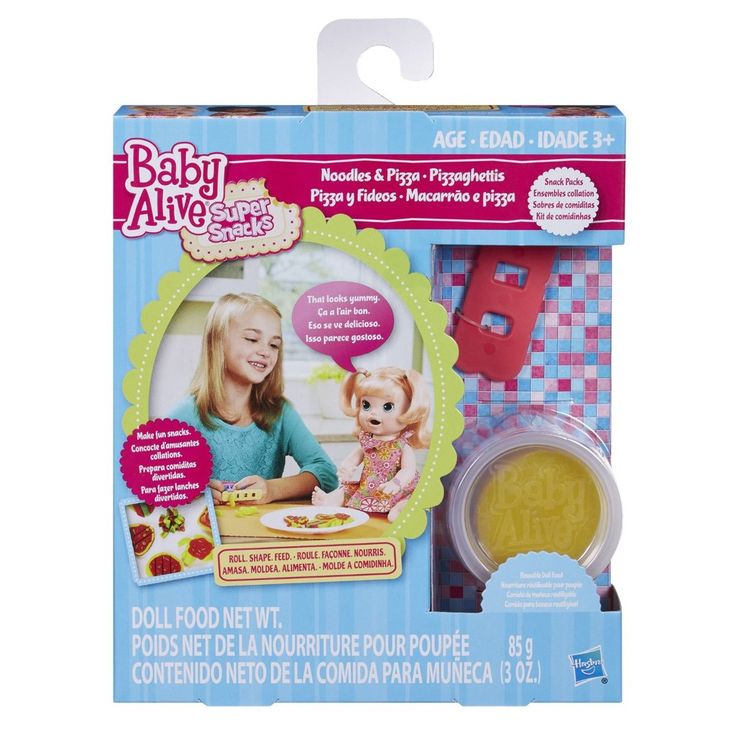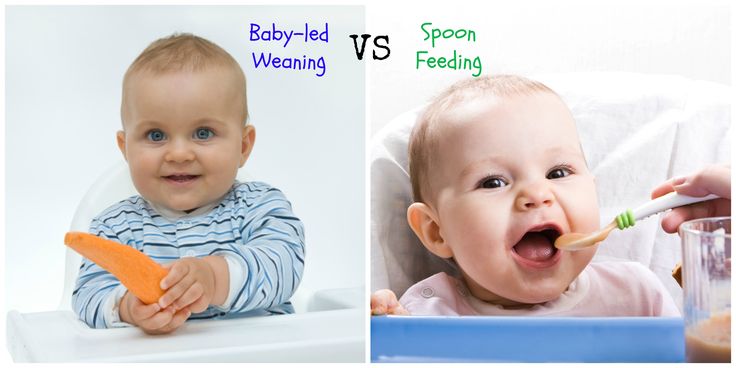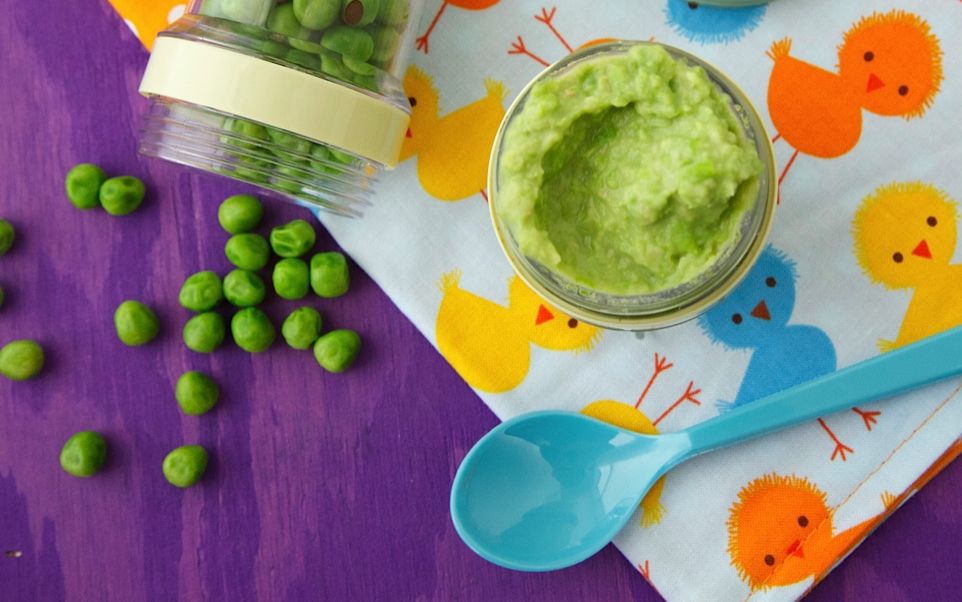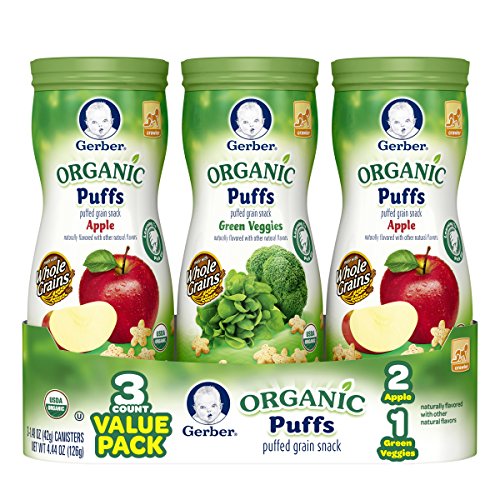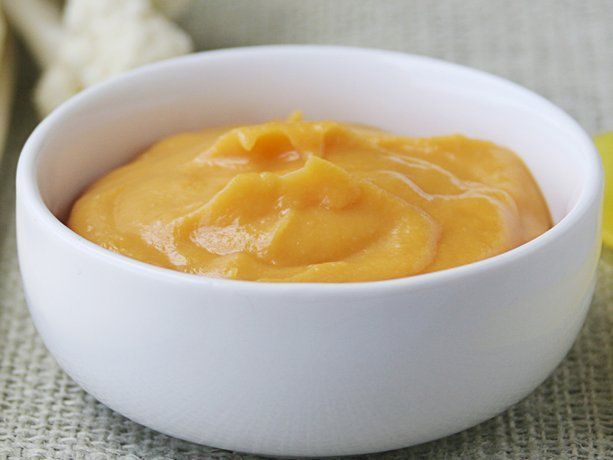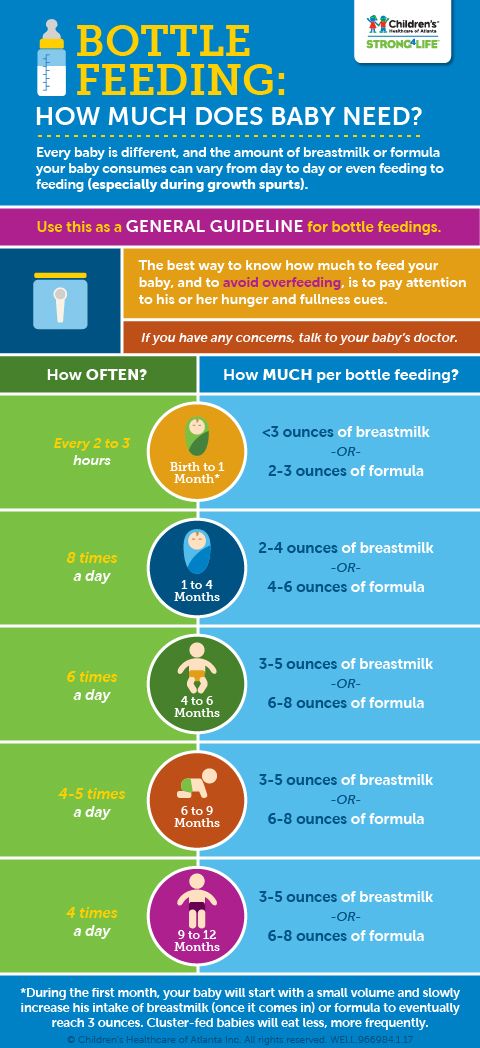When to stop pureeing baby food
When to end purees and start soft table foods with your infant
Julia was delighted to begin solid foods with her 6-month-old son Brandon. Brandon was a champion eater and quickly learned to manage the iron-fortified rice cereal fed to him from a spoon. As Brandon grew, Julia began introducing pureed foods to provide a more balanced diet in addition to breast milk. By 8 months, Brandon grew impatient for his mother to spoon purees into his mouth. At 10 months, Brandon was communicating he was hungry even though he had eaten three bowls of puree an hour earlier. Julia was wondering why her son had such a veracious appetite and wasn’t content after eating
It is a pleasure to introduce infants to the new tastes of solid foods at 6 months of age. Watching their little tongues learn to move food from the front to the back of their mouths to swallow is mesmerizing. And as soon as they have mastered this skill, parents love to start introducing other foods in pureed form, such as fruits and vegetables. Later, protein sources such as meat, fish, or legumes are also added to the purees to provide a balanced diet in addition to breast milk or formula.
However well intentioned, some parents continue to provide purees rather than moving onto solid table foods because:
they fear that their baby won’t eat enough;
their baby will not be able to mash the soft foods with their gums;
their baby will choke on non-pureed foods; or
the parent enjoys spending time feeding their little one with a spoon.
Reasons such as these may lead parents to offer purees longer than is recommended.
Breastfeeding Bootcamp
Includes 16 lessons.
It doesn’t matter whether you are a new mom or if this is your second or third child: breastfeeding is not always easy. Each baby is unique, and your body is also…
View contents
Newborn Care
Includes 8 lessons.
The first three weeks of life are key to your baby’s development. What the newborn feels during this time constitutes their first experience of the world, and will…
View contents
Baby cereals and purees are only needed during the first months of learning to eat solid foods.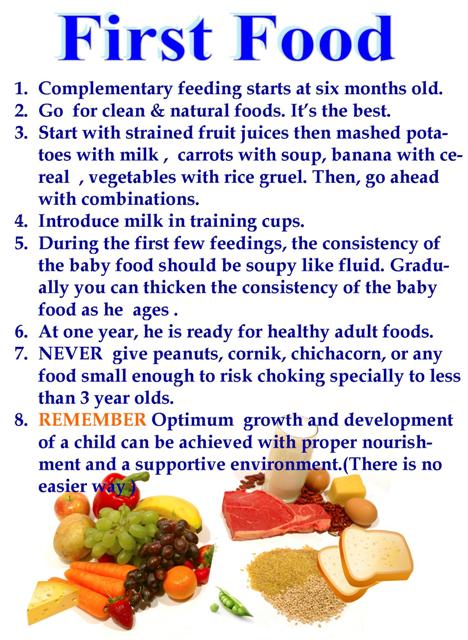 Babies need to learn to control their tongues to move the food from the front of their mouths to the back of their mouths to swallow. Purees allow them the perfect consistency to master this skill. The next step is for them to accept food into their mouth and learn to chew the food with their gums before swallowing. This natural transition from swallowing a liquefied food (puree) to breaking down soft foods (chewing) helps prepare babies for feeding themselves independently.
Babies need to learn to control their tongues to move the food from the front of their mouths to the back of their mouths to swallow. Purees allow them the perfect consistency to master this skill. The next step is for them to accept food into their mouth and learn to chew the food with their gums before swallowing. This natural transition from swallowing a liquefied food (puree) to breaking down soft foods (chewing) helps prepare babies for feeding themselves independently.
When parents continue to offer purees rather than soft table foods, there are a few issues that can arise, including:
Babies take a passive role in eating because the parent is directly involved with spoon-feeding. This can interfere with the baby’s natural hunger and satiety responses;
It can be difficult for babies to accept foods with different types of textures because they are not used to feeling all the unique ways that solid foods feels in the mouth;
Babies can choke if they think they are supposed to swallow everything in their mouth without chewing. They need time and practice to learn to chew before swallowing; and
They need time and practice to learn to chew before swallowing; and
Purees pass through the stomach faster than solid foods because they are already partially broken down before being swallowed. This can lead to feelings of hunger and stress about when the next offering of food will occur.
To help your baby avoid these and many other issues around feeding, it is recommended that purees are phased out and soft, solid foods are introduced as soon as your baby can move foods easily from the front of their mouth to the back to swallow. This usually happens for most infants by 6-8 months of age. After your baby has mastered this skill, you can start providing foods that the rest of your family is enjoying. You can offer well-cooked, mashed, or ground fruits and vegetables, mashed potatoes, sticky rice, or wheat-free dry cereals like Cheerios that have been broken in half in addition to breast milk or formula.
By 7-10 months, most infants are able to eat chopped cooked vegetables, canned or cooked fruits, cheese, mashed cooked dried beans, strips of toast, crackers and dry cereal, as well as breast milk or formula. And by 9-12 months, most babies can eat cut up soft cooked foods, cut up soft foods like bananas or peaches, tender chopped meats, dishes with noodles that are cut up, dry cereal, toast, crackers, eggs, and cheese, in addition to breast milk or formula. This progression is to prepare your baby to move onto being a toddler on their first birthday and be able to eat everything from the family table that is soft. Remember to avoid foods that can cause choking like whole grapes or sausage rounds. Meat should continue to be cut up into small pieces. Whole pasteurized milk can be given in place of breast milk or formula.
And by 9-12 months, most babies can eat cut up soft cooked foods, cut up soft foods like bananas or peaches, tender chopped meats, dishes with noodles that are cut up, dry cereal, toast, crackers, eggs, and cheese, in addition to breast milk or formula. This progression is to prepare your baby to move onto being a toddler on their first birthday and be able to eat everything from the family table that is soft. Remember to avoid foods that can cause choking like whole grapes or sausage rounds. Meat should continue to be cut up into small pieces. Whole pasteurized milk can be given in place of breast milk or formula.
How to Keep Your Teen From Becoming a J@ck@$$
Dr. Deanna Marie Mason PhD
This practical hands-on book explains how to help teens in the process of finding themselves as they grow into adulthood. It is a unique, special guide because it shares teens’ perspectives on what they need to become the people of their dreams…
View contents
Proactive Parenting: How to Raise Teenagers with Values
Dr.
 Deanna Marie Mason PhD
Deanna Marie Mason PhDCyberbullying, sexting, alcohol, drugs, unwanted pregnancies, bullying, academic disinterest, and eating disorders are just some of the worries parents face today. However, these situations or behaviors can be avoided if children are educated in values…
View contents
Allowing your baby to grow and adapt their eating habits during the first year of life, as their development permits, will set them up to learn to accept and enjoy a wide variety of foods that support a healthy diet. They will also learn to take more control over eating enough food to keep their bodies satisfied between meals and snacks. Encouraging your baby to transition from purees to solid foods is a wonderful way to support their growth and development.
Sources:
Satter, E. (2000). Child of mine: Feeding with love and good sense. Boulder, CO: Bull Publishing Company.
Swarzenberg, S. Georgieff, M. & Committee on Nutrition. (2018). Advocacy for improving nutrition in the first 1000 days to support childhood development and adult health.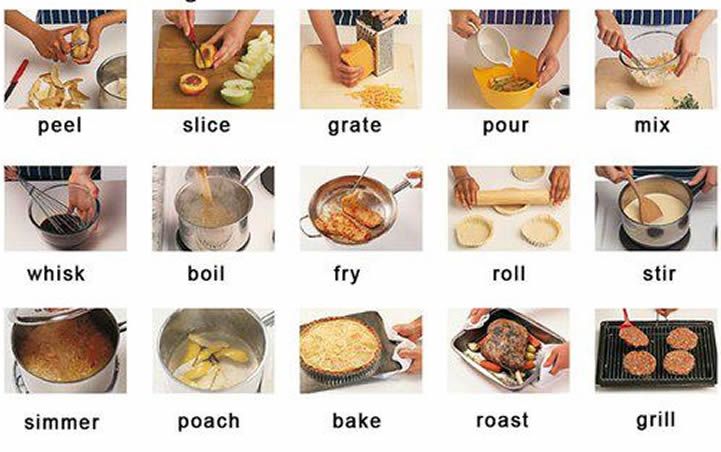 Pediatrics 141(2), doi: 10.1542/peds.2017-3716.
Pediatrics 141(2), doi: 10.1542/peds.2017-3716.
World Health Organization. (2003). Feeding and nutrition of infants and young children: Guidelines for the WHO European Region. Denmark: WHO Region Publications.
Share article
About the instructor
Proactive Parenting
Dr. Deanna Marie Mason PhD
More than 20 years of clinical experience helping families:
Bachelor's Degree in Registered Nursing, Master’s Degree in Pediatric Nurse Practitioner and PhD in Nursing. University professor, patient education specialist, pediatric researcher, published author and reviewer to first-line international scientific journals, continuous philanthropic activity related to health promotion and education, wife and mother of two children.
When to Stop Pureed Food for Infants | Healthy Eating
By Krista Sheehan Updated December 12, 2018
Knowing when to stop pureed foods in your baby's diet isn't as easy as knowing when to change his diaper. There is no one-size-fits-all rule for feeding your baby -- but he'll let you know when he's ready. Adding pureed foods to your baby’s diet at around 4 months of age introduces a new world of tastes and textures. But knowing when to stop pureed foods -- usually around 1 year of age -- is important for helping your baby develop chewing and swallowing skills.
There is no one-size-fits-all rule for feeding your baby -- but he'll let you know when he's ready. Adding pureed foods to your baby’s diet at around 4 months of age introduces a new world of tastes and textures. But knowing when to stop pureed foods -- usually around 1 year of age -- is important for helping your baby develop chewing and swallowing skills.
Developmental Timeline
Typically, infants are started on pureed foods between 4 to 6 months of age. In the beginning, choose pureed foods with only one ingredient. As the infant becomes more accustomed to the new texture, include pureed foods with a combination of ingredients -- this typically occurs around 6 to 8 months of age. As your baby moves into the 8- to 10-month time frame, chunkier pureed foods can be introduced. If your baby does well with these foods, introduce soft, cooked vegetables and cooked fruits, breads, soft cereals, scrambled eggs and yogurt around 10 to 12 months of age. If your baby manages these soft foods easily, stop pureed foods. Ideally, your baby should not be eating pureed foods after 1 year of age.
If your baby manages these soft foods easily, stop pureed foods. Ideally, your baby should not be eating pureed foods after 1 year of age.
Baby’s Readiness Cues
Your baby will give you certain clues that indicate he’s ready for solid and finger foods. These cues might include picking up foods with his thumb and forefinger, easily transferring items from one hand to the other and moving his mouth in a chewing motion. Your baby will also be ready to stop eating pureed foods as he develops more teeth and gains more control of his tongue. However, if you attempt to stop pureed foods at 12 months and your baby is struggling with solid and finger foods, adding pureed foods back into the diet might be necessary. Consult your pediatrician if you have any concerns or questions about your baby’s specific diet.
Allergy Considerations
When adding new foods to a baby’s diet, add only one new ingredient at a time. This feeding plan allows you to more easily identify a baby’s allergies or sensitivities to specific foods. Allow your baby to eat the new ingredient for a few days -- unless an allergic reaction occurs, of course. If no reactions occur after a few days, you can safely add another new ingredient to your baby’s diet.
This feeding plan allows you to more easily identify a baby’s allergies or sensitivities to specific foods. Allow your baby to eat the new ingredient for a few days -- unless an allergic reaction occurs, of course. If no reactions occur after a few days, you can safely add another new ingredient to your baby’s diet.
Foods to Avoid
Certain foods and ingredients should be completely avoided in a baby’s diet. According to the Florida Department of Health, your baby should never be given pureed foods made with honey, corn syrup, added sugar, artificial sweeteners, spices, seasonings or salt.
References- March of Dimes: Feeding Your Baby
- Cooking Light: Baby Feeding Timeline
- BabyCenter: Age-by-Age Guide to Feeding your Baby
Krista Sheehan is a registered nurse and professional writer. She works in a neonatal intensive care unit (NICU) and her previous nursing experience includes geriatrics, pulmonary disorders and home health care.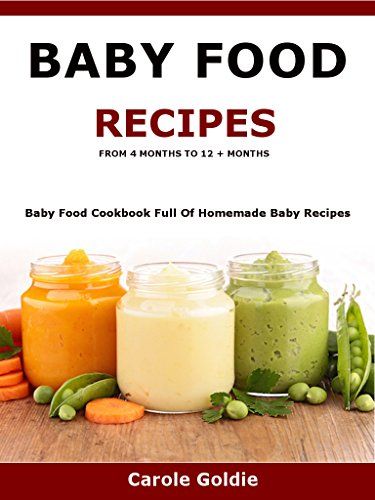 Her professional writing works focus mainly on the subjects of physical health, fitness, nutrition and positive lifestyle changes.
Her professional writing works focus mainly on the subjects of physical health, fitness, nutrition and positive lifestyle changes.
Pedagogical complementary foods - mama.ru
Pedagogical complementary foods are a way to introduce a child to "adult" food, develop his interest in food and teach him to eat on his own. Unlike the traditional introduction of complementary foods, there is no strict plan for the types and quantities of products. One of the main differences is that nothing is specially prepared for the child. He is offered so-called microdoses (two or three rice grains or one sip) of "adult" food. At the same time, it is important not to force the child to eat - it is necessary that he himself shows interest in food. The baby is just getting to know the new food. Mother's milk remains the main food for him. Therefore, this type of complementary food is only suitable for those who are breastfeeding. nine0003
Why do we need pedagogical complementary foods?
Pedagogical complementary foods gradually accustom the child to adult food. Food interest occurs at 4-7 months, and it must be maintained and developed so that the baby has a good appetite in the future.
Food interest occurs at 4-7 months, and it must be maintained and developed so that the baby has a good appetite in the future.
Since it is not at all necessary to grind (purify) food for a child with pedagogical complementary foods, he begins to get acquainted with hard pieces, makes the first attempts to chew and swallow microscopic portions (microdoses). Watching adults, the child learns to use dishes and cutlery, to eat independently. At the same time, the child's body gradually gets used to the food that is eaten in his family. Supporters of pedagogical complementary foods believe that it is pointless to accustom a child to jars, because later he will not eat it. In addition, the content of baby food is also questionable, because their shelf life is two years, which means they are full of preservatives. nine0003
At what age can you start complementary foods?
It is recommended to take the child to the table with you from three to four months. So he learns that food is part of the daily life of all family members. It is important for parents not to miss the moment when the child begins to show interest in "adult" food.
So he learns that food is part of the daily life of all family members. It is important for parents not to miss the moment when the child begins to show interest in "adult" food.
At 5-7 months, the expulsion reflex of the tongue disappears when the baby tries to spit everything out. By this age, he can already sit down by himself, and his body is ready to digest solid food. At this time, you can start pedagogical complementary foods. nine0003
How to organize pedagogical complementary foods?
During the first few weeks, the child sits on the mother's lap while eating and tastes microdoses from her plate. Therefore, the method is suitable only for those mothers who themselves eat properly and varied. Simply put, if you have sausages with ketchup for lunch today, then the idea of complementary food is clearly not suitable for you.
It is important to offer the child all kinds of food, but if he does not like it, do not insist. After giving the baby to try something new, it is better to take a break for a few days.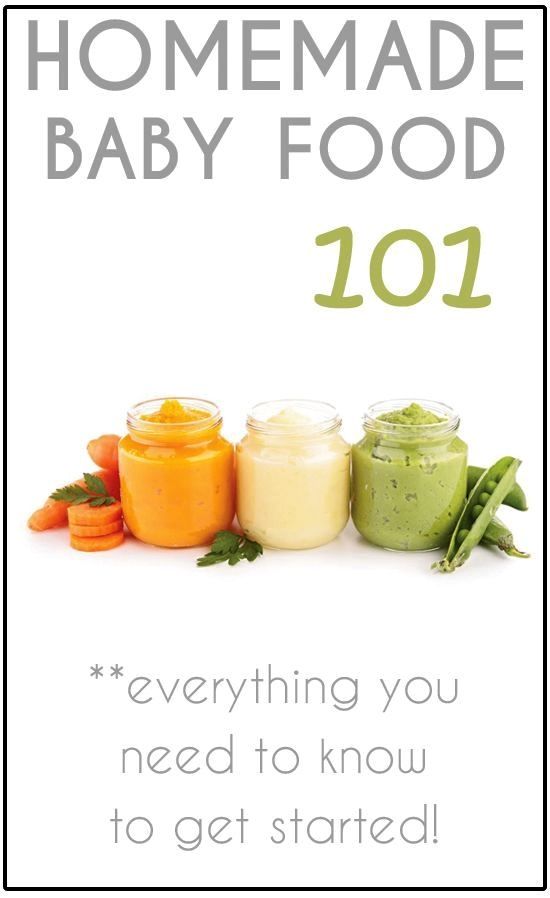 This is necessary in order to find out if he is allergic to any products. nine0009 At one time, you can try two to three microdoses of one product or a microdose of three to five types of products. Gradually, the number of microdoses and types of food increases. The child can be transplanted into a high chair and give him his own plate. Breastfeeding continues in parallel with complementary foods.
This is necessary in order to find out if he is allergic to any products. nine0009 At one time, you can try two to three microdoses of one product or a microdose of three to five types of products. Gradually, the number of microdoses and types of food increases. The child can be transplanted into a high chair and give him his own plate. Breastfeeding continues in parallel with complementary foods.
Isn't it better to give baby food for complementary feeding?
The purpose of infant food is to gradually adapt the child's stomach to "adult" food. Receiving very small portions of exactly “adult” food, the baby adapts to all its components, to a new consistency and to unfamiliar taste sensations. nine0009 If the baby is bottle fed, this adaptation is much slower. Due to its uniform semi-liquid consistency and more neutral taste. In addition, special baby food contains preservatives and stabilizers, dry concentrates with the addition of synthetic vitamins and flavors.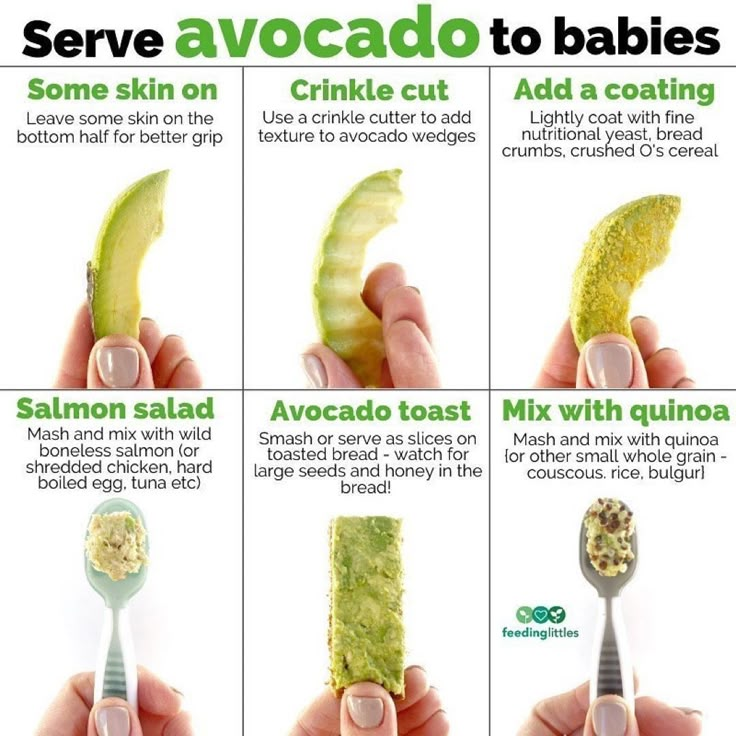 Attentive parents can read all this information on the labels for children's products. Another thing is that there are no labels for winter vegetables and fruits at all. But this does not make them calmer for their composition if they are not grown in their own garden. nine0003
Attentive parents can read all this information on the labels for children's products. Another thing is that there are no labels for winter vegetables and fruits at all. But this does not make them calmer for their composition if they are not grown in their own garden. nine0003
Will the baby choke on unground pieces of food?
Baby food does not need to be specially chopped - just pinch off small pieces. If he tries to swallow too large a piece of food, mom should pull the food out with her finger. Receiving microdoses of "adult" food, an infant learns to chew with its still toothless gums. If a child finds it difficult to swallow a microdose, he can “wash it down” with breast milk.
At what point does complementary foods begin to replace milk feedings? nine0006
The transition to food from the common table goes hand in hand with breastfeeding. It is impossible to abruptly replace feeding with complementary foods. From 8-9 months, the volume of microdoses can be gradually increased.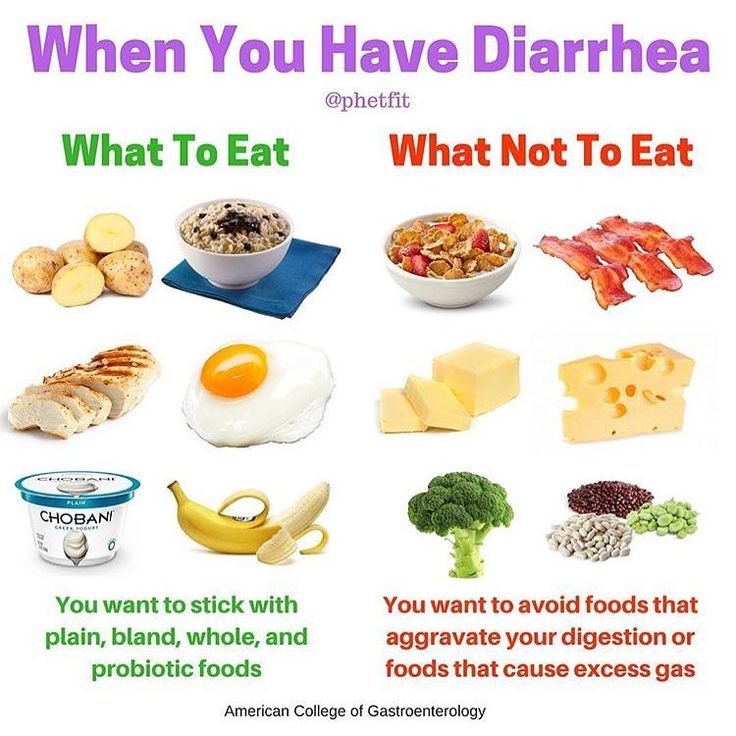 And by the age of one year, bring up to two tablespoons of one product. So, starting from the year, the child eats a portion of food that is already significant for him, washing it down with breast milk.
And by the age of one year, bring up to two tablespoons of one product. So, starting from the year, the child eats a portion of food that is already significant for him, washing it down with breast milk.
What should I pay attention to when introducing complementary foods?
1. Baby's health condition
If your baby has allergies or stomach problems, be very careful not to get worse. Here the principle “Slower you go - you will continue” is suitable. Any new products should be introduced in small portions, track any deterioration after them.
2. The state of health of mother and father
It is important that both mother and any family member from whose plate the child eats be healthy. Carious teeth in the mouth, peptic ulcer in the acute stage, some chronic infections, the current acute respiratory viral infection create a risk of transmitting the infection to the child when using a common plate. If any of these unpleasant moments takes place, it is better for the child to use separate dishes. nine0003
nine0003
3. Healthy Eating
Since the child reaches out to absolutely any product that he sees, it would be wise to make sure that smoked, spicy and all other “forbidden foods” do not come across his eyes. To do this, all adult family members should join a healthy diet.
Share
Tweet
Class
Share
We are in social networks
When can I give my child food from the common table?
Soaking › How long to soak potatoes for a child from starch? nine0003
When can a child be transferred to a common table? But the full transition to a common table is recommended to be postponed until 3 years. On average, products from the common table should be offered to the baby no earlier than he is one year old.
- At what age can a child be given regular food?
- When is the meal from the common table?
- How and when to switch to pieces? nine0089
- How to transfer a baby from mashed potatoes to pieces?
- When does a child start chewing and swallowing normal food?
- At what age can a child be given soup?
- What kind of pieces to give the child?
- At what age can you salt your child's food?
- At what age can you give your child mashed potatoes?
- How to understand that the child is ready for the pieces?
- When to give banana slices? nine0088 How to teach a child to chew?
- At what age does a child start chewing?
- When can you give minced meat to a child?
- How and what to feed an 8 month old baby?
- When can a child eat with a spoon?
- At what age can a child be switched to adult food?
- When can a child be given regular porridge?
- How do I start giving my baby pieces?
- How to teach a child to eat pieces? nine0089
- How many times a day should a child eat at 1 year old?
- What foods to give a child to learn to chew?
- How many times a day should a baby be fed at 7 months?
- What cottage cheese can be given to a child at 8 months?
- Which foods can be given in chunks?
- How to feed a baby at 9 months?
- At what age can you give a child buckwheat?
- What does a common table mean for a child? nine0089
- Is it possible to give cold food to a child?
- How much should a baby eat at 8 months per feeding?
- How to properly feed a child after a year?
- What should a child know and be able to do at 9 months?
- What is Pedprikorm?
- What can be given to a child at 1 year old?
- When can you give your child regular porridge?
- When can a child chew food?
- What can be given to a child from food per year? nine0089
At what age can a child be given regular food?
If the baby is formula-fed, add solid foods to his diet also at 6 months of age. This is the age when all breastfed or formula-fed babies should begin solid foods.
This is the age when all breastfed or formula-fed babies should begin solid foods.
When is the meal from the common table?
When a child switches to foods from the table of adults, they should be carefully chopped up to about a year and a half. And after (up to 2 years) it is enough to knead the vegetables with a fork before feeding. In the third year of life, only meat should be minced. nine0003
How and when to switch to pieces?
At about 7-8 months, you can gradually switch to food with small pieces. Chunky foods where your baby eats food with their hands is a great way to experience different flavors and textures at a comfortable pace.
How do I transfer my baby from puree to chunks?
Introduce lightly blended or forked baby vegetable "soups", boiled or steamed vegetables into your child's diet. You can give your child to try different foods with pieces. And if he didn’t like it, offer again in a couple of weeks. nine0003
When does a child start chewing and swallowing normal food?
For someone it starts at 4-5 months, for someone at 7 and later.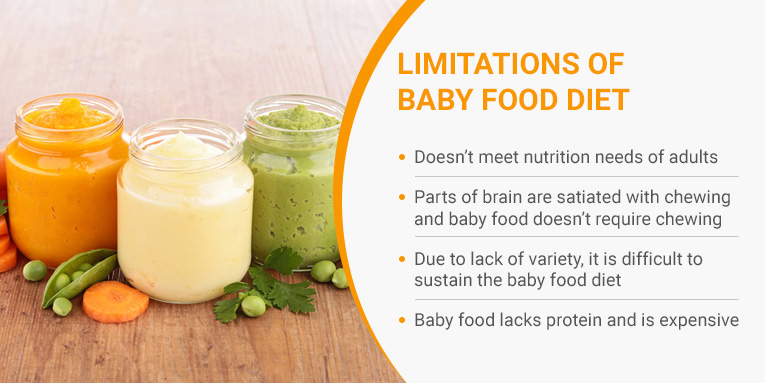 Now is the time to start introducing your baby to solid foods. It is very important to catch up to the first tooth.
Now is the time to start introducing your baby to solid foods. It is very important to catch up to the first tooth.
At what age can soup be given to a child?
Soup can be included in the baby's diet from 12 months, starting to give 1-2 teaspoons, gradually increasing the portion by another 1-2 teaspoons. The very first baby soup is a vegetable soup made from broccoli, zucchini or cauliflower. All ingredients must be ground in a blender. It turns out a kind of analogue of vegetable puree. nine0003
Which pieces to give to the child?
Pieces should always be soft, so that the child can knead them with his fingers. It is dangerous to give solid pieces, because the child does not have the opportunity to chew them, but he can easily choke.
At what age can you salt your child's food?
Salt should only be administered after breastfeeding or artificial feeding is completed, usually at 1 or 1.5 years of age. The baby will receive a third of the daily intake of sodium and chlorine "naturally" - from vegetables, fruits, cereals, meat and fish. nine0003
nine0003
At what age can you give your child mashed potatoes?
At the age of 7-9 months, when your little fidget starts teething, you can already give him potatoes boiled in small pieces, which the baby could chew independently and with pleasure.
How do you know if a child is ready for the pieces?
How do parents know when a child is ready to chew solid food? - Food interest is formed conditionally from 4 to 6 months, when the child pulls a plate, a spoon towards himself, asks for food. During this period, complementary foods begin, gradually moving from homogeneous puree-like dishes to more dense, with pieces. nine0003
When to give banana slices?
From the age of 8-9 months, when the baby can already boast of teeth, banana pieces should appear in the complementary foods of your little fidget.
How to teach a child to chew?
To teach your child to chew both soft foods and hard pieces, you should gradually add foods with larger food particles to the meal. For example, soft bread can be gradually added to the soup so that the child can feel the pieces of food on the tongue. nine0003
For example, soft bread can be gradually added to the soup so that the child can feel the pieces of food on the tongue. nine0003
At what age does a child start chewing?
The ability to chew is formed at the moment when the baby's chewing teeth (molars) erupt. For most children, this occurs closer to one and a half years. Usually the first upper molars appear between 12 and 18 months, the lower ones a month or two later. Therefore, the inability to chew at 10 months does not mean anything.
When can you give minced meat to a child?
Children eat minced meat better, after 8 months it will be possible to introduce steam meatballs and cutlets from rabbit and turkey meat into the diet with the permission of the doctor. nine0003
How and what to feed an 8 month old baby?
By the age of eight months, the baby already has a sufficient set of complementary foods: various vegetables (zucchini, broccoli, cauliflower, potatoes, pumpkin, carrots, sweet potatoes), fruits (apple, pear, banana, peach, apricot), cereals (buckwheat , rice, corn), meat (turkey, rabbit, beef, chicken), butter and
When can a child eat with a spoon?
At about 9 months of age, your baby can start picking up a spoon on their own. But this does not mean that he will be able to scoop up food and bring it to his mouth. Rather, it is about the fact that the child is trying to copy the movements of adults. A child usually masters a full-fledged spoon by about a year and a half. nine0003
But this does not mean that he will be able to scoop up food and bring it to his mouth. Rather, it is about the fact that the child is trying to copy the movements of adults. A child usually masters a full-fledged spoon by about a year and a half. nine0003
At what age can a child be switched to adult food?
How I advise introducing a child to adult food
Complementary foods should be introduced from 6 months, when the baby began to be interested in what his parents eat. First, I recommend giving him cereals, mashed potatoes and vegetables. The child will refuse at first, but will gradually get used to new smells and tastes for him.
When can a child be given regular porridge?
From the age of 1.5 you can switch to adult cereals - oatmeal, wheat, millet, etc. Cottage cheese. nine0003
How do I start giving my baby pieces?
GENERAL RECOMMENDATIONS FOR INTRODUCING PICK FOOD
☆ 8-9 months mash food with a fork, not a blender. The main thing is not to rush, gradually increase the size of the pieces. If the baby refuses to eat, then you need to offer him later, after a few days. ☆ 10-12 months give your child an apple, pear, banana, etc.
If the baby refuses to eat, then you need to offer him later, after a few days. ☆ 10-12 months give your child an apple, pear, banana, etc.
How to teach a child to eat pieces?
Another piece of advice from Olga Lukoyanova: parents need to keep their child interested in food by offering it in the form of pieces and allowing them to take it with their hands. Pieces should appear in the baby's diet already from 8-10 months, when puree-like food is gradually replaced by finely chopped ones. nine0003
How many times a day should a 1 year old child eat?
In a year, around the time children start walking, your child should eat four to five meals a day and have two healthy snacks. Dairy products are a very important part of your child's diet - give him one to two cups of milk a day.
What foods to give to a child to learn to chew?
The best foods for those who learn to chew:
- Bananas If there is one useless invention among baby food, it is banana puree.
 nine0089
nine0089 - Avocado
- Potatoes
- Berries and melon
- Beetroot
How many times a day should a baby be fed at 7 months?
Parents can begin to form a classic division of food consumption per day. But at 7 months, the baby needs to be fed not three or four, but five times a day at intervals of four hours. The first and final feeding is mother's milk or formula.
What cottage cheese can be given to a child at 8 months? nine0164
How much curd can a child have?
| 8 months | 9-12 months |
|---|---|
| 0 g → 40 g | 40 g → 50 g |
What products can be introduced by pieces?
Of course, the first solid foods should not be crackers, dryers and other hard things. Boiled vegetables can be ideal - potatoes, carrots, zucchini, as well as banana slices or a baked apple. nine0003
How to feed a baby at 9 months?
In addition to milk and infant formula, the following foods can be given to the child:
- Fruit and vegetable puree (apple, pear, cauliflower, etc.
 )
) - Fruit juices and compotes without sugar.
- Meat in various forms.
- Fish.
- Porridges from various cereals.
- Chicken or quail egg yolk.
- Children's fresh cottage cheese. nine0088 Children's low-fat kefir.
At what age can buckwheat be given to a child?
At the age of about 9-10 months, the baby is gradually accustomed to food of a non-uniform consistency. This also applies to porridge. Buckwheat is no longer chopped, boiled from ordinary cereals - still on the water. You can cook with milk if there is no reaction to it.
What does a common table mean for a child?
COMMON CHILD'S TABLE
Parents are relieved of the obligation to cook one or more separate meals for the youngest member of the family, to use products from the "baby food" category. Everyone eats the same thing - this is the basic principle of a common table. nine0003
Is it okay to give cold food to a child?
Cold food and drinks can be a good way to temper a child. If you carefully give them to your baby in moderation, then this will not harm. Ice cream and cold juice can be harmful, rather because of the sugar content.
If you carefully give them to your baby in moderation, then this will not harm. Ice cream and cold juice can be harmful, rather because of the sugar content.
How much should an 8 month old baby eat per feeding?
A child aged 6-8 months should be fed solid food 1-3 times a day. The serving size for one feeding is 1-1.5 dl or about half a tea cup. Food should be pureed and gradually, as the child approaches 8 months, increase the size of the pieces. nine0003
How to properly feed a baby after a year?
The daily amount of food for children aged 1 to 1.5 years should be 1000-1200 g, from 1.5 to 3 years - 1200-1500, the amount of food in one feeding should not exceed 300-350 ml. The diet consists of three main meals per day and two snacks.
What should a 9 month old baby know and be able to do?
What a child can do at 9 months
Responds to his own name. Pronounces the first words. He sits well on his own and sits without support. He gets up on his feet and moves with support, confidently gets on all fours, crawls, moving in turn his right arm and leg, then his left, grabs small objects with two or three fingers. nine0003
nine0003
What is Pedprikorm?
Pedagogical complementary food is a type of complementary food that introduces a child to "adult" food, develops his food interest and teaches him to eat on his own. The main goal of this complementary food is pedagogical, that is, to teach the baby to eat like adults and to show interest in the food of their parents.
What can be given to a child at 1 year old?
Fruits, vegetables.
At the age of one year, the child usually already eats vegetable and fruit purees (carrot, apple, potato, pear, banana, zucchini, prunes, pumpkin, broccoli). After a year, it is possible to introduce beets, kiwi, beans, green peas, apricots into the diet. Important! nine0003
When can you give your child regular porridge?
From the age of 1.5 you can switch to adult cereals - oatmeal, wheat, millet, etc. Cottage cheese.
When can a child chew food?
It is important not to miss the right moment when chewing is the easiest to develop.

